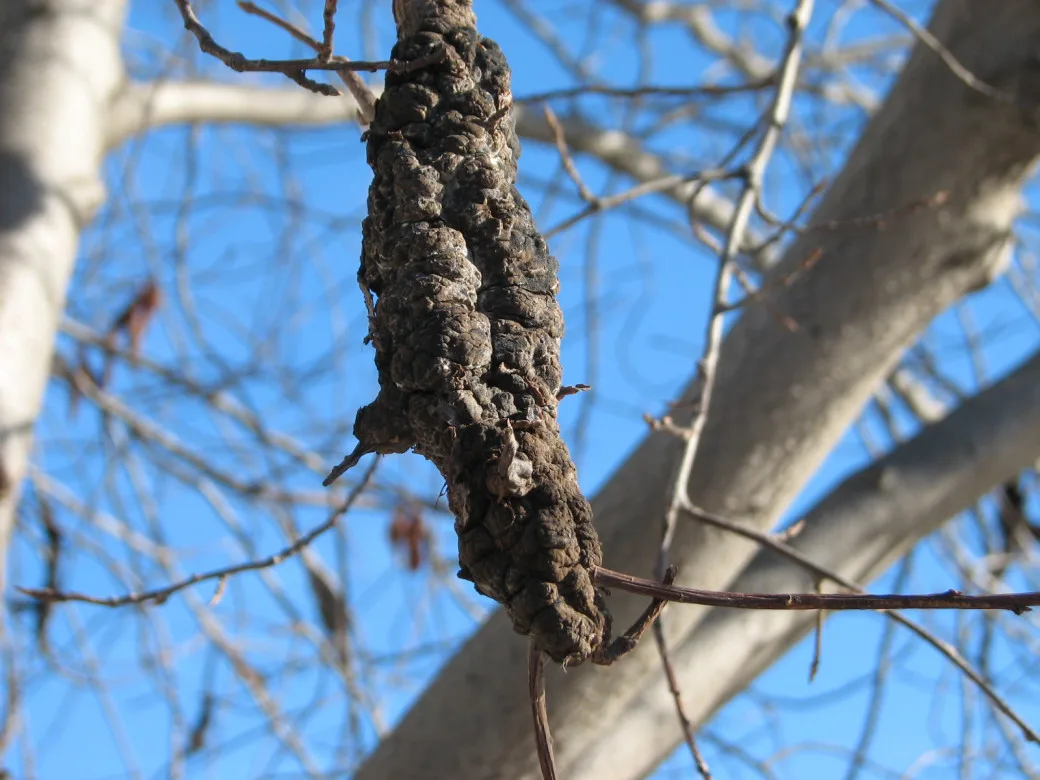Have you ever looked at the trees on your property and noticed a brown/green/black swelling on the branches? If you have, you may be looking at the fungal disease which is called “Black Knot”. Black Knot (Apiosporina morbosa) can affect all varieties in the Prunus genus or better known as Cherry trees. Although you see it most commonly in the Schubert Chokecherry and Mayday tree, it can also appear in trees like the Amur Cherry, Plums, Apricots, Nanking Cherry, and any Prunus hybrid.So, what are we looking for when trying to identify Black Knot? The initial stage of the spore will have the features of a small olive-green swell on the infected plant. The gall will then continue to grow until it reaches maturity at around 2-3 years. At this point of maturity, the gall will appear as a larger black coloured swell that looks eerily similar to feces.
This fungus will damage the aesthetic value your tree holds. Not only that, if left unmanaged, it will cause the trees inevitable death. Once Black Knot has infected a branch, it will continue to grow until it has fully girdled the branch, cutting off all its nutrients and water supply, which then kills the branch. The spores of Black Knot are released after wet periods and can be spread by birds, insects, and wind.
Although this disease can be deadly for your trees, there are ways to mitigate the problem. The best thing to do to ensure your trees survival is pruning out the fungus whenever it becomes present. A proper pruning cut to an appropriate lateral branch at least 15cm from the infected area is required. Failure to remove Black Knot properly will result in the fungus re-growing in the tree. Regular monitoring of the tree and proper airflow through the canopy from pruning are your best options of defense.









